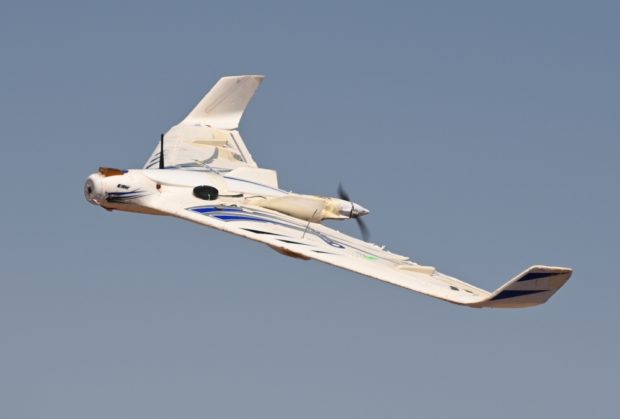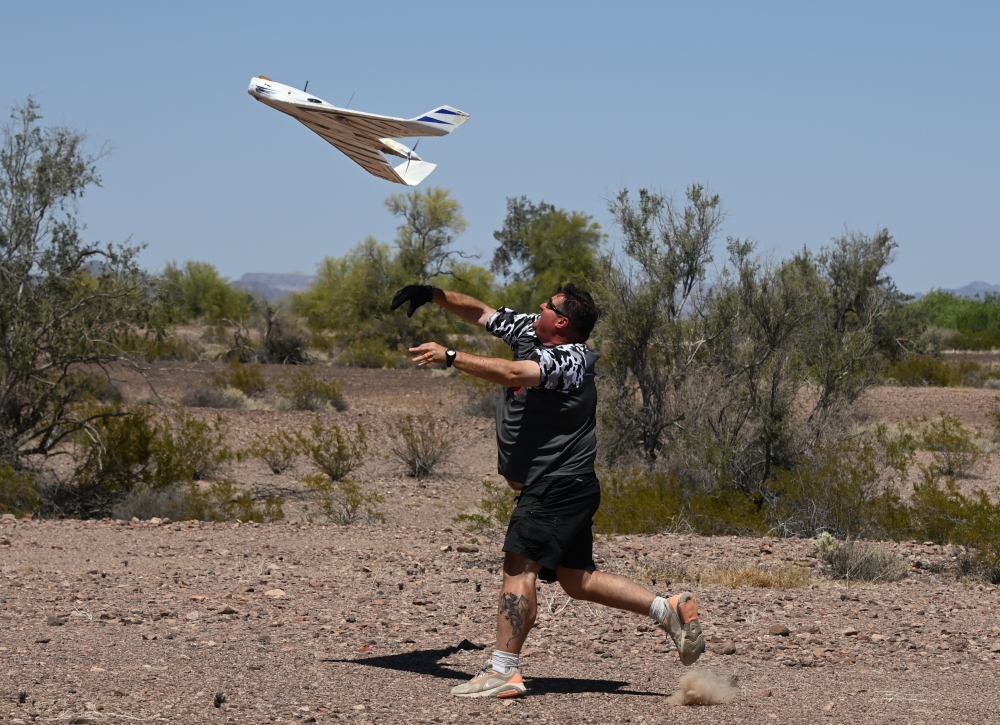The Joint C-sUAS Office (JCO) hosted two C-sUAS demonstrations at Yuma Proving Ground (YPG) last year with the Army’s Rapid Capabilities and Critical Technologies Office (RCCTO) to give industry the opportunity to show their latest technology.
“The counter UAS threat has evolved significantly over the past few years,” said Maj. Gen. Sean Gainey, Director of the JCO. “The way to evolve C-sUAS technology to meet this threat is to constantly re-look our current capabilities. In order to support the warfighter, the demonstrations give us the opportunity to work with industry and bring out all of the latest and greatest capability to get ahead of the threat.”
The first two demonstrations were so successful that YPG was tapped again to host a third multi-week event in April.
“Every JCO event so far has shown higher levels of difficulty because every event has been different” said Hi-Sing Silen, YPG test officer. “This event has two focus areas, as opposed to one last time. It was a crawl-walk-run approach to find out what we needed to support testing.”
“We’ve expanded the time horizon from the first demonstration being a week, the second being two weeks, and this one is three weeks,” said Col. Greg Soule, Acquisition and Resources Division Chief for the JCO. “There are some pretty significant capabilities that we are looking at this time.”
During the first week of the demonstration, testers evaluated systems that utilized high powered microwaves to defeat threat systems.
“Because it is new to us, we had to make sure that the test plan was flexible enough to be able to collect frequencies, power levels, and distances,” said Silen.
In weeks two and three, the demonstration was open to any C-sUAS system that demonstrated how Contractor Owned Government Operated (COGO) capabilities could detect, track, identify, and defeat sUAS threats. This COGO concept is referred to as Counter-sUAS as a Service (CaaS). A Company’s successful demonstration of the CaaS concept could potentially result in them signing a service contract with the government.
“The DOD normally buys things and owns it for the life cycle: you have to put it to rest at the end, and in between you have to maintain it and upgrade it as necessary,” said Soule. “We could potentially pay an industry partner to perform this as a service to the DOD with the responsibility to maintain and upgrade it, and to a certain extent operate it.”
It is also possible that each of these systems has sub-components manufactured by different companies.
“That brings additional challenges to ensure we can accommodate every component that a customer brings,” said Silen.
In the demo scenarios, the testers gave the competitors geographic boundaries for a notional forward operating base (FOB) that the systems had to defend against incoming flying threats.
“The profiles are straightforward, but challenging,” said Silen. “They are designed to make sure customers are tested in a similar way so we are comparing apples to apples.”
The two primary data points that testers sought were the range of effectiveness—how close could a threat get before the counter-UAS system stopped it—and how long it took to defeat the threat system. In some cases, a threat system wasn’t completely destroyed, but was impacted to an extent that it couldn’t get close enough to pose a threat to the mock FOB.
“We could spend a whole year trying to assess every little component of the systems,” said Silen. “This is a very compressed data matrix that collects essential, key aspects of how the systems are performing.”
Truth data—the real location of a threat—was a key aspect to verifying each systems test performance. In the second and third weeks of the CaaS demonstration, the performance data was tailored to the system depending on what types of components were present—a camera or jammer, for instance.
“YPG provides a great opportunity [to test systems] because of the range structure and standardization it provides,” said Gainey. “We’re able to bring out all of the different capabilities from the Services and industry, put them on a common range, and measure the effects equally across the systems.”
“What we primarily focused on in that first week for high-power microwave was how well the effector emitted,”Michael DiGennaro, the test team lead for JCO’s acquisition and resourcing division, said during a May 11 media roundtable.
“We were looking at range to engage the targets that were inbound and the amount of time it took to either deter or defeat the target,” he added. The targets ranged among UAS groups 1, 2 and 3 and were used either one at a time or two simultaneously. (Group 1 drones weigh up to 20 pounds; Group 2 from 21 to 55 pounds; and Group 3 more than 55 pounds but less than 1,320 pounds.)
How’d the counter-drone systems perform?
The Leonardo DRS system — called a “vector inversion generator” — “was hindered in that it did not have an antenna to radiate,” DiGennaro said.
But the JCO was able to assess the technology through its ability to hand off a detected threat from the government-owned command-and-control system, and then generate the power necessary to defeat the threat. “With that, we were able to capture power output and the amount of time that the electromagnetic pulse was on the target just with instrumentation,” DiGennaro explained.
The Epirus system “was able to defeat targets in the range that is normally associated with what is currently in the field,” DiGennaro said, “and has the promise to be a little bit more effective in the future.”
Raytheon’s capability “was very much in development, shows some promise for future development,” he said, but “the ranges were somewhat shorter in their ability to defeat the incoming targets.”
The office also assessed countering small UAS as a service, or CaaS, through contractor-owned, government-operated capability at fixed locations.
The office received a total of 25 whitepapers for CaaS and selected five to demonstrate their capabilities because they met specific requirements. Those five were Anduril Industries, Black Sage, CACI, Rafael Systems Global Sustainment and SAIC.
“We had five very complex architectures out there,” DiGennaro said. “Each of them brought a host of different components for detection, identification, tracking and defeat, and we tested against each of those components both individually and then as a system, culminating in a ‘defend the forward-operating base’ scenario.”
The data collected is still being analyzed, he added, and a report will be published for limited distribution within the Defense Department next week.
“This was as much a learning exercise for us as it was for the companies,” DiGennaro said of CaaS. “We had architectures out there that had not previously been working together, components in particular, architectures that were coming out there for the first time.”
The JCO was able to form new industry partnerships as well as get companies with different elements of the engagement chain together that had not worked together before, he said. “They’re trying new combinations. They’re developing things as we go.”
YPG is among the most capable of a limited number of test ranges able to accommodate this type of work. The proving ground’s clear, stable air and extremely dry climate along with vast institutional UAS testing knowledge makes it an attractive location to testers, as does the ability to control a large swath of the radio frequency spectrum. YPG has more than 500 permanent radio frequencies, and several thousand temporary ones in a given month.
“We’ll continue to enhance what we’ve built,” said Gainey. “We’re investing in the YPG ranges to be able to provide the data collection we need from the different capabilities we’re testing, whether it is high powered microwave, directed energy, or electronic warfare effects. This range is able to accommodate all of that, and we want to continue to improve upon it so we can get after the future threat.”
Photos: Mark Schauer


